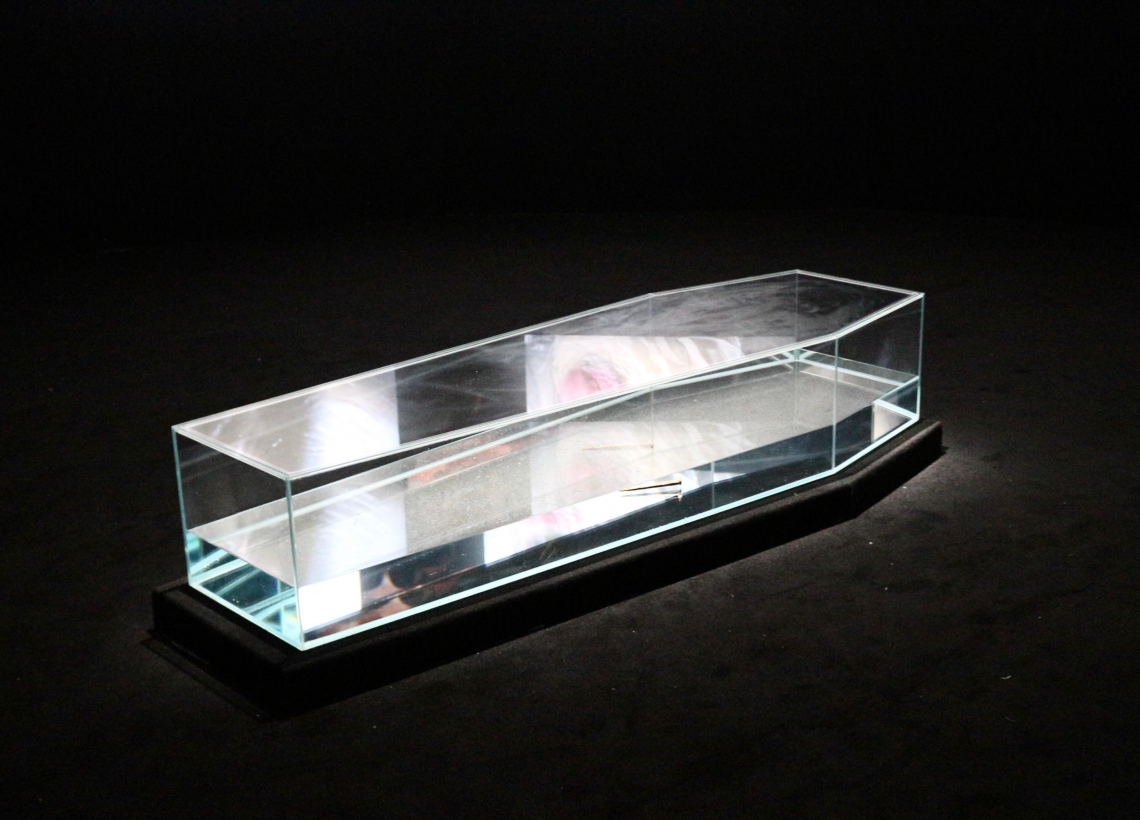Photographer Fabrizio Ferri inaugurated the world premiere exhibition at the Natural History Museum in Milan (from April 2 to 27, 2025) entitled Breathtaking.
Breathtaking is an installation conceived and created by the famous international photographer to denounce the devastating effects of plastics and microplastics in the oceans.
The protagonists of Breathtaking are 12 large images that portray testimonials of excellence such as Helena Christensen, Misty Copeland, Willem Dafoe, Charlotte Gainsbourg, Gala Gonzalez, Julianne Moore, Bridget Moynahan, Carolyn Murphy, Isabella Rossellini, Susan Sarandon, Naomi Watts , transfigured by plastic waste. The evocative installation evokes the vulnerability of aquatic ecosystems, between rough iron nails, a glass coffin filled with sea water and headphones created for the occasion by Marina Abramovich, making the installation one of a kind. Ferri's twelve breathless portraits "take the breath away" of visitors, transporting them to the deafening silence of the sea depths where animal species cry out their suffering.
Promoted by the Municipality of Milan-Cultura, produced by Nobile Agency and the Museum of Natural History in collaboration with the Università Cattolica del Sacro Cuore of Milan and created thanks to Euromobiliare Credem, Breathtaking is an ambitious project that aims to raise awareness among the general public on the issue of environmental protection through art.
"If current trends continue, global plastics production will rise from nearly 500 million tons today to more than 1,2 billion tons in 2060. Despite the growth in recycling, the key problem with plastic waste remains ‘mismanagement’ or improper management (open-air burning, dumping into the sea and rivers, uncontrolled landfilling), which accounts for a 22% share globally: this means 23 million tons of waste dispersed in the environment. The great economic importance of the plastics sector continues to be a barrier to drastic policies to reduce its environmental impacts. The cost of ‘nonaction,’ that is, the current trend of waste with no intervention, exceeds the cost of intervention policies," read a statement. "It is estimated that the amount of plastics on land exceeds that in oceans and in other bodies of water. Plastics are also ubiquitous in food, beverages, and in our bodies. The main problem with plastics is that, unfortunately, they not only break down very slowly in the environment, but also disaggregate into smaller and smaller fragments, originating the formation of microplastics and nanoplastics. Research and technology are already studying, and in some cases, providing solutions to the problem. Plastics are being developed that are much more resistant to disaggregation processes and thus reusable, virtually indefinitely, in durable products without generating microplastics. At the same time, increasingly easily biodegradable bioplastics are being studied for singleuse materials, that prevent problems of microplastic accumulation or toxicity."
Breathtaking
April 2 – 27, 2025
Natural History Museum
Corso Venezia 55
20121 Milano




